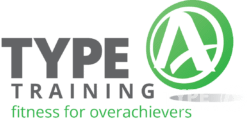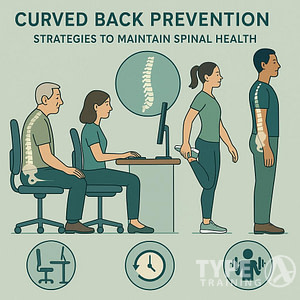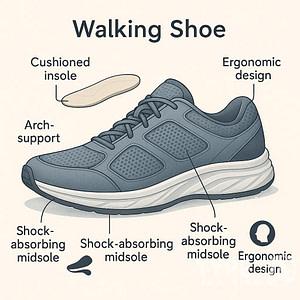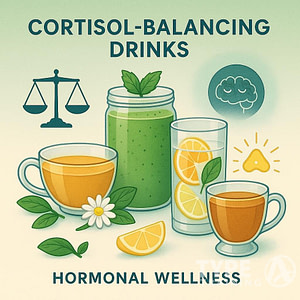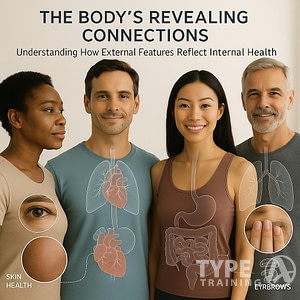The role of a female personal trainer encompasses various aspects of health and fitness for women, taking into account their unique physiological and psychological needs. Hormonal changes throughout a woman’s menstrual cycle can significantly impact her ability to exercise, making it essential for personal trainers to understand and address these fluctuations when designing workouts. By considering these hormonal changes, a female personal trainer can customize exercise routines that enhance the benefits of physical activity during each phase of the cycle, ensuring women achieve their fitness goals more effectively.
In addition to addressing hormonal variations, a female personal trainer must also be attuned to the psychological issues that may affect their clients’ motivation and commitment to exercise, such as stress or anxiety. It is essential for personal trainers to address these physiological and psychological factors when guiding women through their fitness journeys. Creating a positive, supportive relationship with the client can contribute to their overall well-being and long-term success in attaining their health aspirations. Customizing workouts based on the menstrual cycle, dietary and lifestyle factors are important factors in helping women achieve their fitness goals.
Key Takeaways
- A female personal trainer must understand how hormonal changes in a woman’s menstrual cycle impact her ability to exercise and tailor workout plans accordingly.
- Addressing unique psychological issues faced by women is a critical aspect of a female personal trainer’s role, fostering a supportive environment for clients.
- Customizing workouts based on the menstrual cycle, dietary, and lifestyle factors can help women achieve their fitness goals more effectively.
Role of a Female Personal Trainer
Challenges Faced by Female Personal Trainers
As a female personal trainer, you may face unique challenges in your profession. One issue is the potential impact of female hormones on your clients’ exercise routines. Hormones play a significant role in women’s fitness, and understanding their fluctuations during a menstrual cycle is crucial for devising effective workouts for women at different life stages1. Progesterone and estrogen levels can affect endurance and energy utilization2, making it essential for you to tailor exercise programs according to your clients’ needs.
Popular posts:
Gender Stereotypes and Biases in the Fitness Industry
You may also encounter gender stereotypes and biases in the fitness industry, with some clients having preconceived notions about what types of exercises are suitable for women. As a female personal trainer, it’s your responsibility to challenge these misconceptions and promote a balanced, well-rounded fitness approach that considers the individual goals of your female clients. Be confident and knowledgeable in your training methods, empowering your clients to break free from gender stereotypes and achieve their fitness objectives.
Empathy and Understanding of Female Clients’ Needs and Concerns
One of your key roles as a female personal trainer is to empathize with your clients and understand their unique health needs and concerns3. This includes being aware of the physical and psychological issues that may arise from hormonal fluctuations, particularly during the menstrual cycle. Your certification and expertise in this area will allow you to provide personalized guidance and ensure your clients remain accountable for their fitness goals.
By addressing these challenges and utilizing your skills as a female personal trainer, you can help your clients navigate hormonal and psychological issues while also empowering them to embrace unique health pursuits based on their menstrual cycle. Remember to use various formatting options, such as tables, bullet points, and bold text, to convey information to your clients effectively. Be confident, knowledgeable, neutral, and clear in your approach while focusing on their specific fitness needs.
Navigating Hormonal Changes
Menstrual Cycle and Fitness
During your menstrual cycle, hormonal fluctuations can impact your exercise performance. Estrogen and progesterone, two primary female hormones, play significant roles in regulating your energy levels, mood, and muscle recovery. In the follicular phase (days 1-14), estrogen levels rise, and you may experience increased energy and strength. This is a great time to focus on high-intensity workouts and strength training. During the luteal phase (days 15-28), progesterone levels rise, and you might feel fatigued and bloated. You can adjust your exercise routine to include low-intensity workouts, like yoga or walking, to maintain fitness without over-exerting yourself.
Hormones and Exercise Performance
Estrogen helps improve muscle repair and recovery by reducing inflammation and promoting new cell growth. Progesterone counteracts estrogen’s effects and can cause less efficient muscle recovery and reduced energy levels. As a female personal trainer, it’s essential to understand the interplay of these hormones in your clients’ exercise performance and tailor their routines accordingly. Keeping track of their menstrual cycles can help you determine the best times for specific workouts.
Perimenopause and Menopause
Perimenopause is the period leading up to menopause when your hormone levels start to fluctuate and can cause symptoms like hot flashes, fatigue, and mood swings. Menopause is the point at which menstruation ceases, signaling the end of your reproductive years. Both stages can impact your exercise regimen, as the decreased estrogen levels may lead to reduced muscle mass, bone density, and energy. During this time, it’s vital to incorporate weight-bearing exercises and cardiovascular workouts to maintain muscle and bone strength.
Hormonal Imbalance and Infertility
Hormonal imbalances, caused by factors such as polycystic ovary syndrome (PCOS) or thyroid issues, can affect fertility and exercise performance. As a female personal trainer, you can help your clients manage these imbalances by designing workouts that cater to their energy levels and promote overall hormonal balance. For example, incorporating stress-reducing exercises like yoga and mindfulness-based activities can help balance cortisol levels, which can positively impact hormonal health and fertility.
Addressing Psychological Issues
Exercise and Mental Health
Engaging in regular physical activity is essential for maintaining your mental health. Exercise can help alleviate symptoms of depression and anxiety by releasing endorphins that boost your mood and improve your overall well-being. When incorporating physical activity into your routine, a female personal trainer can help you choose exercises that are suitable for your fitness level and menstrual cycle stage. This tailored approach ensures that you benefit the most from your workouts, both mentally and physically.
Stress and Anxiety Management
Stress and anxiety are common psychological issues that can be managed through regular exercise. Working with a female personal trainer can provide you with the support and guidance you need to manage your stress levels effectively. Your trainer will help you create a personalized workout plan that includes relaxation techniques like yoga, tai chi, or mindfulness meditation, as well as activities that help release tension, such as aerobic exercise or resistance training. By staying committed to your fitness goals, you’ll be better equipped to handle the challenges of everyday life.
Motivation and Goal Setting
Setting realistic goals is crucial for staying motivated and committed to your fitness journey. Collaborating with a female personal trainer allows you to set achievable goals based on your unique health pursuits and menstrual cycle. Your trainer can offer valuable insights into how your hormone levels influence your performance and mood, allowing you to make adjustments to your routine to maximize results. By focusing on small, measurable goals and celebrating your progress, you’ll find it easier to stay committed to your fitness plan and overcome any psychological hurdles standing in your way.
Exercise Routines for Unique Health Pursuits
Pregnancy and Postpartum Fitness
During pregnancy, it’s essential to exercise safely to maintain your health and prepare for childbirth. Focus on low-impact workouts like swimming, walking, or prenatal yoga. Be aware of your body’s limitations and avoid exercises that put you at risk for falls or injuries1. After giving birth, gradually resume your fitness routine, starting with gentle activities like walking and pelvic floor exercises. Consult your healthcare provider before beginning any postpartum workout to ensure you’re cleared for exercise.
Aging and Exercise
As you age, staying active is crucial for maintaining muscle strength, bone density, and overall health2. Incorporate a combination of aerobic activities, strength training, balance exercises, and flexibility training into your routine. Low-impact exercises such as swimming, walking, or cycling are suitable options for older adults. Remember to listen to your body and consult your healthcare provider for personalized recommendations.
Weight Gain and Weight Loss
Achieving a healthy weight involves a balance of proper nutrition and exercise. To lose weight, incorporate calorie-burning activities like cardiovascular exercise while focusing on strength training to build muscle mass for weight gain. Consistency and setting realistic goals are key to long-term success. Remember to consult a fitness professional or healthcare provider for guidance tailored to your unique needs.
Cardiovascular Health
To promote heart health, aim for at least 150 minutes of moderate-intensity aerobic exercise or 75 minutes of vigorous-intensity exercise per week3. Activities like brisk walking, jogging, swimming, or cycling can help improve your cardiovascular fitness. Consistently engaging in these exercises will help lower your risk of heart disease, and it’s important to find activities you enjoy to ensure you stick to your routine.
Chronic Illness and Exercise
Regular exercise can help manage chronic illnesses like diabetes and asthma by improving your overall health and reducing symptoms. Ensure that you consult with your healthcare provider before initiating any exercise program to receive personalized advice based on your specific condition. Always pay attention to your body’s signals and adjust your routine as needed.
Customizing Workouts Based on Menstrual Cycle
Strength Training and Resistance Training
During the follicular phase of your menstrual cycle, your estrogen levels are low, which can make it an ideal time to focus on strength training and resistance training. Take advantage of this period by increasing the weight, intensity, or volume of your exercises to build muscle and boost your metabolism. As estrogen levels rise during ovulation, you may notice increased energy and enhanced performance. This is a great time to continue building upon your strength training routine.
High Intensity Interval Training and Cardiovascular Training
During ovulation, your energy levels are typically at their highest, so take advantage of this by incorporating high-intensity interval training (HIIT) into your routine. HIIT has been shown to help boost your cardiovascular fitness, burn calories, and increase endurance. In the luteal phase, when your energy may dip due to hormonal fluctuations, consider incorporating moderate-intensity cardiovascular training to balance out your energy levels and maintain overall fitness.
Flexibility and Core Training
Incorporating flexibility and core training throughout your menstrual cycle can help support proper form and prevent injury during more intense workouts. Yoga and Pilates are excellent options for increasing flexibility and strengthening your core. As your menstrual cycle progresses, pay attention to how your body feels and adjust your routine accordingly. Some women may feel more flexible during the follicular phase, while others may feel more comfortable incorporating these exercises during the luteal phase.
Rest and Recovery
Rest and recovery are crucial aspects of any workout routine, especially when considering your menstrual cycle. During the first few days of your menstruation, your body may need more rest to help manage symptoms such as cramps, fatigue, and mood swings. Listen to your body and plan rest days accordingly, ensuring that you’re giving yourself enough time to recover and rejuvenate before tackling your next workout.
Remember, it’s important to personalize your workout routine to suit your unique needs and preferences. By understanding how your menstrual cycle affects your energy, performance, and recovery, you can optimize your workouts for better results and overall well-being.
Addressing Dietary and Lifestyle Factors
Nutrition and Hormonal Balance
As a female, your nutrition plays a significant role in hormonal balance, especially when you’re working out. Consuming adequate protein helps in muscle growth, repair, and overall recovery. Including essential fats, such as omega-3 and omega-6 fatty acids, can help reduce inflammation and enhance insulin sensitivity. Foods rich in antioxidants, vitamins, and minerals also contribute to maintaining hormonal balance.
Keeping an eye on your carbohydrate intake is essential, especially for female athletes. Carbohydrates provide energy, which is crucial when working out, but it’s vital to choose complex carbs that won’t cause blood sugar spikes and inflammation.
Effects of Birth Control and Medications
It’s essential to consider how birth control and other medications may impact your health and fitness routine. Some birth control methods can cause fluctuations in hormone levels, affecting your energy, mood, and even muscle growth. Be sure to consult with your health care provider about any possible side effects and how to optimize your workouts accordingly.
Medications for conditions such as diabetes or thyroid dysfunction can also influence your fitness journey. Understanding their effects on your body will help you make informed decisions to enhance your fitness goals better.
Importance of Sleep and Stress Management
Sleep and stress management are critical for your overall health and your workout routine. Chronic stress can lead to elevated cortisol levels, which may inhibit muscle growth and promote obesity.
Getting quality sleep is essential in regulating hormones like cortisol and insulin, which are involved in muscle growth and repair. Strive for at least 7-9 hours of sleep per night and develop a healthy sleep routine to set yourself up for success.
Incorporating stress management techniques, such as yoga, meditation, and even regular exercise, can help you reduce cortisol levels and achieve a better hormonal balance for optimal fitness results. Remember, addressing your unique health pursuits as a woman involves not only physical fitness but also mental and emotional wellbeing.
The Essential Skills and Qualifications for Female Personal Trainers
source: issaonline.com
As a female personal trainer, understanding how to navigate hormonal and psychological issues can put you in a unique position to help women achieve their fitness goals. In addition to standard personal training certifications, consider obtaining a specialization in women’s fitness, such as the Women’s Fitness Specialization (NASM-WFS).
When working with female clients, it’s important to develop strong communication skills. This will allow you to explain complicated health and fitness topics in ways they can understand, improving adherence to workout programs and overall satisfaction. Building a strong rapport with your clients can lead to loyalty and a long-lasting personal trainer-client relationship, as suggested by a study on women’s perspectives of personal trainers.
In order to effectively address unique health pursuits, staying informed about the latest research on women’s health is crucial. Engaging with reputable sources like PubMed, government health organizations, and educational institutions can provide up-to-date information to better serve your female clients.
As a female personal trainer, consider collaboration with other professionals like doctors and nutritionists. Understanding your client’s menstrual cycle and unique hormonal needs can greatly impact their progress. Building relationships with these professionals will help you create customized fitness plans and provide support to your clients during different stages of their cycle.
To help women achieve their fitness goals based on their menstrual cycle, an understanding of hormonal fluctuations and their effects on performance is essential. For example:
- Follicular phase (days 1-14): Women are likely to experience increased energy and strength due to rising estrogen levels. Focus on high-intensity workouts and strength training during this time.
- Ovulatory phase (days 14-16): Energy levels might peak, making it an ideal time for challenging workouts or endurance activities.
- Luteal phase (days 16-28): As progesterone levels increase and estrogen declines, women may experience fatigue and reduced performance. This is a great time for lower intensity exercises, such as yoga or swimming.
In conclusion, obtaining specialized certifications, developing effective communication skills, staying informed on women’s health issues, and collaborating with other professionals are essential for you to be successful as a female personal trainer. Knowledge of menstrual cycles and their impact on performance can greatly enhance your ability to help women achieve their fitness goals.
Frequently Asked Questions
What hormonal issues can a female personal trainer address?
A female personal trainer can help clients navigate hormonal issues affecting their performance, such as changes in estrogen and progesterone levels. These hormones influence women’s menstrual period and bone health ACOG. By understanding their clients’ hormonal cycles, female trainers can assist women in making informed decisions about their exercise routines and avoid potential obstacles related to hormonal imbalances.
How do psychological factors affect women’s fitness goals?
Psychological factors, such as confidence and motivation, can impact women’s fitness goals. It is essential for female personal trainers to facilitate open conversation about these issues and help clients feel comfortable discussing their needs and concerns Mayo Clinic. By creating a supportive and understanding environment, trainers can empower their clients to overcome mental barriers and stay focused on achieving their fitness objectives.
How can a female personal trainer help in unique health pursuits?
Professional trainers are equipped with the knowledge and skills necessary to help their clients pursue various health and fitness goals. They can create customized workout plans that cater to the unique needs and preferences of their women clients. Additionally, their understanding of female-specific health issues, such as the importance of building and maintaining bone density.
What strategies can be employed for fitness goals based on the menstrual cycle?
A female personal trainer can help clients tailor their exercise plans to accommodate the hormonal fluctuations experienced throughout the menstrual cycle. For example, trainers may recommend lower-intensity workouts during the early phase of the cycle when energy levels tend to be lower and gradually increase intensity as the cycle progresses. By understanding the impact of hormonal changes on exercise performance, female trainers can provide women with strategies to optimize their workouts and stay on track with their fitness goals.
How do personal trainers address gender-specific fitness needs?
Female personal trainers are equipped to address the unique fitness needs of women, from understanding hormonal cycles to providing guidance on exercises that cater to female anatomy. This knowledge enables them to create personalized fitness plans that account for the distinct physical and biological factors that affect women’s health and fitness goals.
What role does a female personal trainer play in women’s overall health?
A female personal trainer plays a significant role in helping women maintain overall health by creating a supportive environment in which they can confidently pursue their fitness goals. Trainers provide guidance on various aspects of health, including proper nutrition, stress management, and the significance of hormonal balance Cleveland Clinic. By taking an individualized approach to each client’s needs and understanding the unique challenges faced by women, female personal trainers can have a profound impact on their clients’ well-being.
